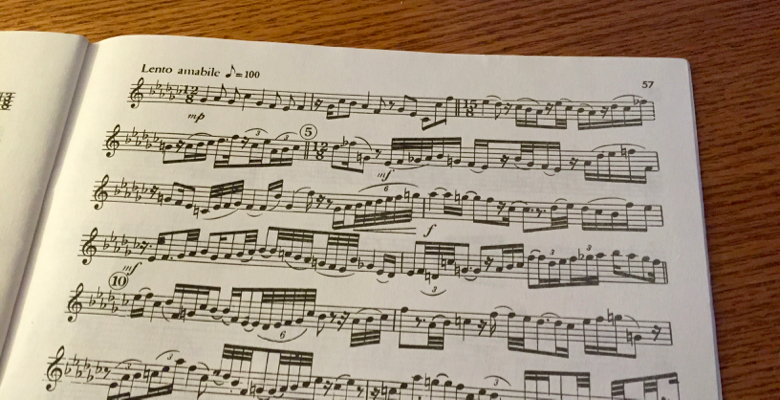Why You Shouldn’t Avoid Discomfort
 From Gaston DuFresne’s Develop Sightreading. This book is full of discomfort.
From Gaston DuFresne’s Develop Sightreading. This book is full of discomfort.
Musicians are supposed to practice sight-reading (playing music we’ve never seen before).
Sight-reading is a crucial skill. We need to be able to sound good playing anything, not just music we’ve practiced for weeks.
Practicing sight-reading is dead simple: you practice it by doing it.
But simple doesn’t mean easy, and sight-reading is also uncomfortable. When you sight-read, you have to listen to yourself sound bad. Musicians like to sound good.
And musicians don’t get to have all the fun. Anyone who creates, whose job can’t be put in a manual, has to deal with discomfort in the creative process.
A pastor who spends Saturday afternoon working through his Sunday sermon has to hear himself stumble, lose his place, and repeat himself.
A front-end web developer working on a new Wordpress plugin has to pore over her PHP code to figure out what’s causing an error.
A blogger writing an article has to rewrite an awkward sentence over and over until the meaning is clear and the wording is concise.
Wrestling with your own work is uncomfortable, and it’s tempting to try to avoid discomfort, to minimize it, to find shortcuts around it.
I think it’s better to sit with it.
Sitting With Discomfort
Creative discomfort arises from the tension between the work we’re actually producing and the ideal version we see in our heads.
Artists sit with this discomfort, knowing that the tension is the point. To take something that’s not good yet and make it good: that’s what creating is all about. If we shy away from the discomfort, we don’t get any better.
Most people are really bad at this. They’re so afraid of discomfort that they avoid it at all costs, seeking shortcuts, workarounds and heated seats. It’s no coincidence that most people don’t create much.
Creative work is hard. When you’re staring at a blank page, editing your poem for the hundredth time, or listening with dismay to a practice recording of yourself playing the Tchaikovsky Violin Concerto, it often feels like there must be an easier path. Surely there’s a way to sidestep the frustration of looking at your work and thinking, “This isn’t very good. How do I make it good?”
There’s not, though.
The only way out is through.